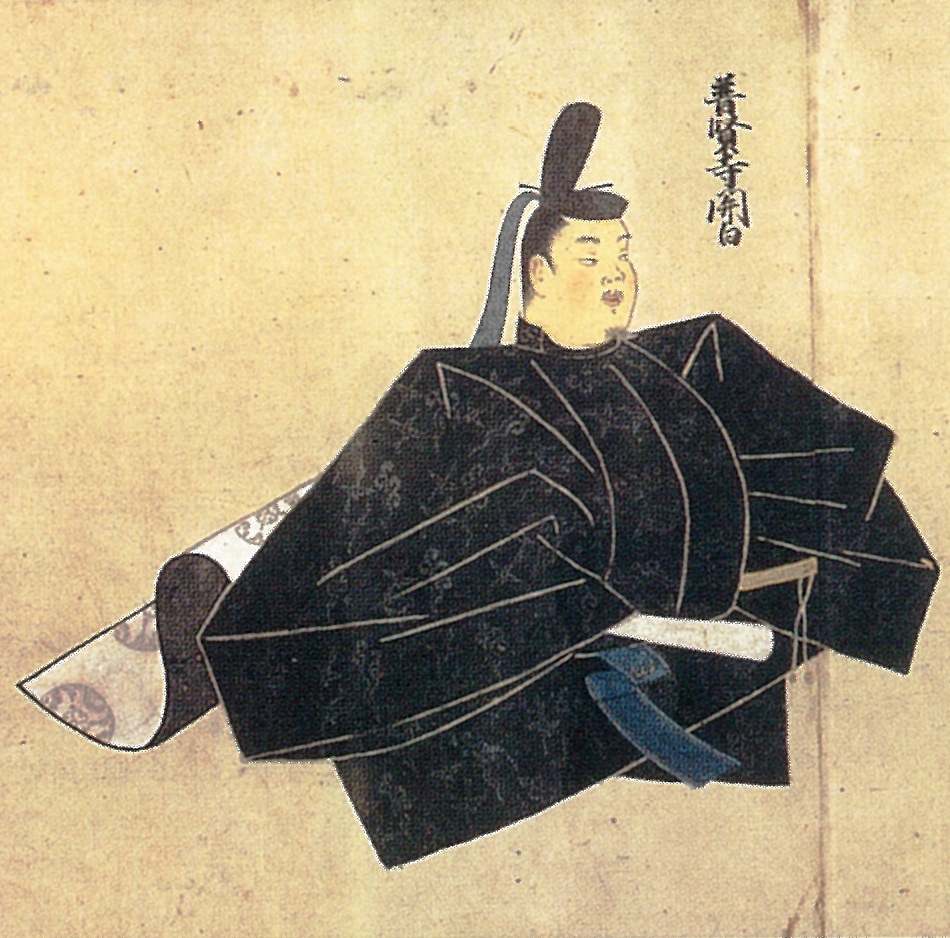Konoe Motomichi on:
[Wikipedia]
[Google]
[Amazon]
 was a ''
was a ''
 was a ''
was a ''Kugyō
is the collective term for the very few most powerful men attached to the court of the Emperor of Japan in pre-Meiji eras. The term generally referred to the and court officials and denoted a court rank between First Rank and Third Rank un ...
'' (high-ranking Japanese official) from the late Heian period
The is the last division of classical Japanese history, running from 794 to 1185. It followed the Nara period, beginning when the 50th emperor, Emperor Kammu, moved the capital of Japan to Heian-kyō (modern Kyoto). means in Japanese. It is a ...
to the early Kamakura period
The is a period of History of Japan, Japanese history that marks the governance by the Kamakura shogunate, officially established in 1192 in Kamakura, Kanagawa, Kamakura by the first ''shōgun'' Minamoto no Yoritomo after the conclusion of the G ...
. His father was Motozane, the founder of Konoe family
is a Japanese aristocratic family. Papinot, Jacques Edmond Joseph. (1906). ''Dictionnaire d’histoire et de géographie du Japon''; Papinot, (2003)"Konoe," ''Nobiliare du Japon'', p. 24 retrieved 2013-8-13. The family is a branch of Hokke and ...
, and his mother was a daughter of Tadataka. Among his sons is Iezane. His wife was Taira no Sadako, the sixth daughter of Kiyomori
was a military leader and ''kugyō'' of the late Heian period of Japan. He established the first samurai-dominated administrative government in the history of Japan.
Early life
Kiyomori was born in Japan, in 1118 as the first son of Taira no ...
.
In 1179, Motomichi was promoted to kampaku, regent, as a result of the coup led by Kiyomori
was a military leader and ''kugyō'' of the late Heian period of Japan. He established the first samurai-dominated administrative government in the history of Japan.
Early life
Kiyomori was born in Japan, in 1118 as the first son of Taira no ...
, the father of his stepmother who also his father-in-law. In February of the following year he took the position of sesshō, regent-ship for Emperor Antoku
was the 81st emperor of Japan, according to the traditional order of succession. His reign spanned the years from 1180 through 1185. His death marked the end of the Heian period and the beginning of the Kamakura period.
During this time, the Im ...
.
In 1208, he ordained as a Buddhist monk and took the Dharma name
A Dharma name is a new name acquired during both lay and monastic Buddhist initiation rituals in Mahayana Buddhism and Pabbajjā, monastic ordination in Theravada Buddhism (where it is more proper to call it Dhamma or Sangha name). The name is ...
Gyōri (行理).
Parents
*Father: Konoe Motozane
*Mother: Fujiwara no Tadataka
*Wife: Taira no Sadako, daughter of Taira no Kiyomori
was a military leader and '' kugyō'' of the late Heian period of Japan. He established the first samurai-dominated administrative government in the history of Japan.
Early life
Kiyomori was born in Japan, in 1118 as the first son of Taira ...
(平完子)
*Concubine: Daughter of Minamoto no Akinobu
**Konoe Iezane
, son of Motomichi, was a court noble (''Kugyō'') of the early Kamakura period. His sons include: Takatsukasa Kanehira, and Konoe Kanetsune.
In 1206 when Kujō Yoshitune died, he became the head of the Fujiwara family and Sesshō. The same ...
(近衞家実; 1179-1242), first son
*Concubine: Taira no Nobuko (平信子 )
**Konoe Michitsune (近衞道經; 1184-1238), second son
*Concubine: Daughtjer of a monk
**Takatsukasa Kanemoto (鷹司兼基), third son
**Motonori Fujiwara (藤原基教; 1196-1213), fourth son
*Unknown Concubine
**Enchu (円忠; 1180-1234)
**Enjō (円浄; 1189-1256)
**Enki (円基)
**Shizuchu (静忠; 1190-1263)
**Nisumi (仁澄)
**Minobu (実信)
**Mitoko (尊任)
References
Sesshō and Kampaku Motomichi 1160 births 1223 deaths People of the Heian period People of the Kamakura period Buddhist clergy of the Kamakura period {{japan-noble-stub